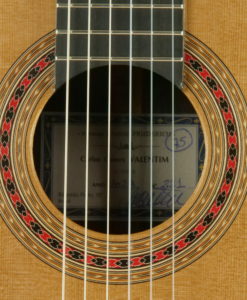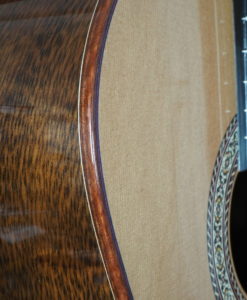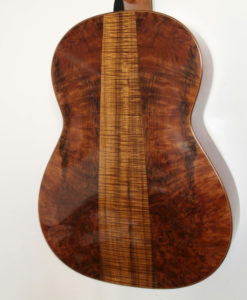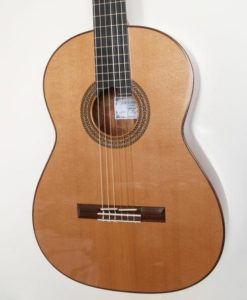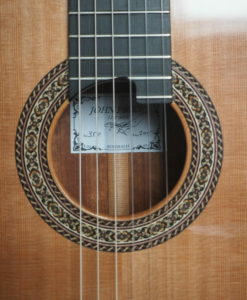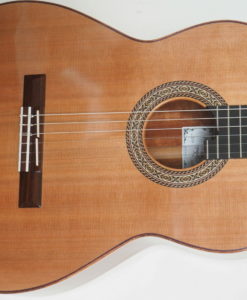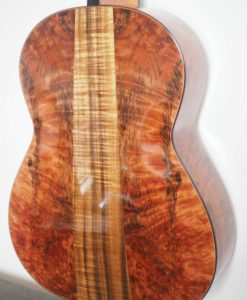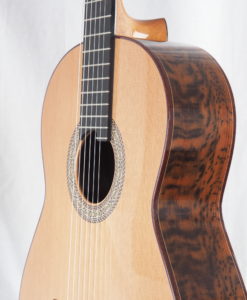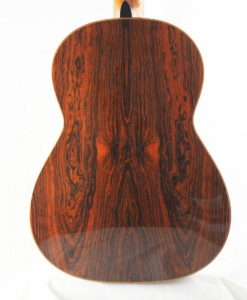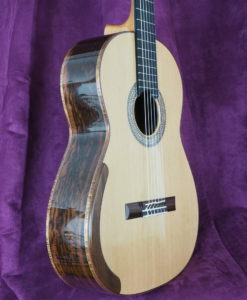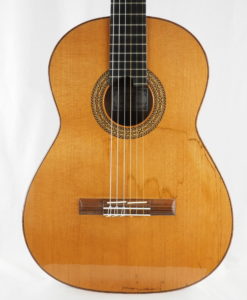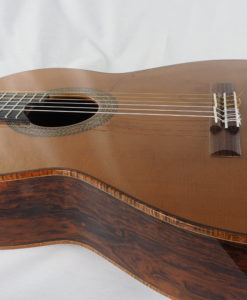This website uses cookies so that we can provide you with the best user experience possible. Cookie information is stored in your browser and performs functions such as recognising you when you return to our website and helping our team to understand which sections of the website you find most interesting and useful.
Here are an abstract of John Price luthier interview borrowed from the web :
In 1970 my family and I moved from Wallingford in the Midlands of the UK to Australia. I was offered an apprenticeship in cabinetmaking not long after we arrived here and for the next seven years I worked in a factory making office furniture. This is where I acquired a sound background in all aspects of the trade, including wood machining, assembly, finishing and upholstery. After that I was employed in the government sector as a maintenance carpenter for the Department of Highways where I became a leading hand. I remained there for 13 years
My first guitar:
At the age of eight, I was given my first guitar as a Christmas present. It was one of those cheap and nasty things with steel strings and a cowboy painted on the top. Even so, I loved it and the sounds I could make with it, especially when I over-tuned the strings to breaking point. Consequently I snapped more strings than I could afford to replace with my pocket money, so I stole the nylon from my dad’s fishing rod and pleated my own strings with varying numbers of strands to make up the required diameters. Oddly enough the sound I got from these crude strings pleased my ear more than the steel ones. I think this childhood discovery was the catalyst that pushed me in the direction of making the nylon strung classical guitars which I specialize in today.
It was around 1992 when my father showed me a book from the local library, Make Your Own Classical Guitar by Stanley Doubtfire. It really captured my imagination and inspired me to attempt to make a top quality guitar for myself. I was looking for something else to do with wood other than cabinetry and the Grandfather clocks I had been making to satisfy my creative urges. When I first opened this book and began to read I felt like I had been shown my true calling, the photos and descriptions of rare and exotic woods being so finely worked and delicately bent to shape on a hot iron was too much to bear, I had to have a go.
I was married with two young daughters and my wife Lesley had not yet returned to work. I decided the following year to try and supplement our income by working weekends making guitars based loosely on those made by the Spanish master luthiers Jose Romanillos and Ignacio Fleta and the French luthier Robert Bouchet, all of whom had featured in the book shown to me by my father.
The first guitar I made wasn’t a failure and although it didn’t have a bad sound, it was nowhere what I had hoped to achieve. My second guitar was shown to arguably Australia’s finest guitar player, Tommy Emmanuel, who was a guest artist at a concert I performed in with my brass band. He was very encouraging and told me he would love to hear my third guitar. As a result of the encouragement I had received, I began showing my guitars to teachers around Adelaide and soon after they began to sell on a regular basis.
Being professional.
An important point in my development was in 1995 when I attended a guitar festival in Darwin and met some already established Australian makers. Although I was getting pleasing results using traditional methods of construction, I was excited by the innovative techniques of the Australian School of Guitar Making such as the use of lattice-bracing. They were adopting the use of modern materials and concepts, and also experimenting with non-traditional Australian timbers. I found these guitars possessed a fuller sound that intrigued and excited me.
I didn’t get the opportunity to inspect the guitars as closely as I would have liked at the Darwin festival, all I had to go on was some discussions I had with the various makers, in particular, the late Eugene Philp, a pioneering Australian guitar maker, who in his own colourful way spent a lot of time with me sharing some of his knowledge and ideas. I remain always indebted to him.
I generally work with traditional exotic species, although I believe some Australian Species, in particular Tasmanian Blackwood, have resonance qualities that rival timbers such as Brazilian Rosewood and are particularly useful in traditionally made classical and steel strung guitars.Although largely unprepared, I went to work. I was pleased with my first lattice-braced guitar. It had good volume and good sustain, and while it didn’t have the depth or complexity of sound I was hoping for, it was still a vast improvement on my first traditional instrument. I took what I had learned from making this guitar and added my own ideas and slowly began to get a real understanding of how these instruments worked. I had to think outside the square as I was making guitars very differently to how I had previously.
John Price luthier classical guitar

 French
French German
German Spanish
Spanish Italian
Italian
